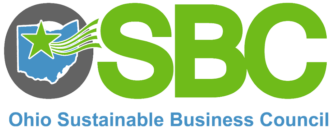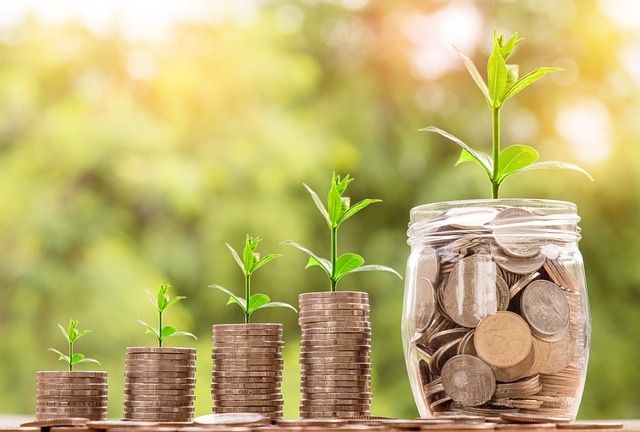Creating a more sustainable business is not only beneficial for the environment but can also lead to cost savings and an improved brand reputation. You may have already implemented some of these. Below are some ideas to help make your business more sustainable.
- Energy Efficiency: Invest in energy-efficient lighting, appliances, and equipment to reduce electricity consumption.
- Energy Audits: Conduct regular energy audits to identify areas for improvement. More about energy audits.
- Renewable Energy: Switch to renewable energy sources such as solar or wind power to lower carbon emissions and utility bills.
- Reduce Waste: Implement waste reduction strategies, like recycling programs and composting, to minimize landfill waste. More about reducing waste.
- Sustainable Packaging: Use eco-friendly packaging materials and minimize excess packaging.
- Supply Chain Sustainability: Source products and materials from suppliers with sustainable practices.
- Transportation Alternatives: Encourage employees to use public transportation, carpool, or provide incentives for biking and walking.
- Remote Work: Promote remote work options to reduce the need for commuting and office space.
- Green Building: Design and retrofit office spaces with eco-friendly materials and energy-efficient systems.
- Water Conservation: Implement water-saving technologies and practices in your operations.
- Paperless Office: Reduce paper usage by digitizing documents and processes.
- Product Sustainability: Develop products with longer lifecycles and materials that are easy to recycle.
- Employee Education: Train employees on sustainability practices and engage them in green initiatives.
- Community Engagement: Get involved in local sustainability initiatives and give back to the community.
- Carbon Offsetting: Invest in projects that offset your company’s carbon emissions.
- Fair Trade and Ethical Sourcing: Ensure fair labor practices and ethical sourcing in your supply chain.
- Reusable Resources: Replace disposable items with reusable alternatives, such as coffee mugs and utensils.
- Green Marketing: Promote your sustainable efforts to attract environmentally-conscious customers.
- Circular Economy: Explore ways to reuse, refurbish, or recycle products and materials within your business model.
- Data Analytics: Use data analytics to identify areas where sustainability improvements can yield the most significant impact.
Remember that sustainability is an ongoing process, and it’s essential to set clear goals, measure your progress, and adapt your strategies as needed to continually improve your business’s environmental footprint.
Create a sustainability action plan
The commitment to sustainability should start with the top executives of the organization and become integrated into the company’s vision and operations. Many high-level executives are not aware of how much energy the company uses and how much it costs, as this information is typically not monitored or included in facility reports. A good first step could be to conduct a company-wide resource audit that examines potential cost savings. This audit should cover energy usage, water usage, and waste/materials management. It should also explore the benefits of incorporating renewable, clean energy technologies such as solar power, wind turbines, biofuels, advanced batteries, and LED lighting. Additionally, it should examine local code requirements to better understand the technology options available for your site.
Audit your Energy Use
An energy audit may reveal that heating and cooling spaces and heating water are some of your biggest energy expenses. There may be system modifications that can save you money and reduce your company’s impact on the environment.
Example: Assess your HVAC system to determine if it’s due for an upgrade. Today’s systems are smaller, quieter and produce more heating and cooling with less energy use than systems from a decade or more ago. An upgrade could pay for itself in reduced costs in a very short time. Switch to programmable thermostats if applicable. Prevent energy losses in ducts by sealing them and improving their insulation effectiveness, or R-value. Keep filters changed out on a 6-month (maximum) schedule.
Learn more about the types of energy audits available in Ohio.
Upgrade lighting & Weatherization
Changing out old fixtures and bulbs for newer, energy-efficient lighting can significantly decrease your energy bills. While LEDs might have a higher initial cost compared to traditional incandescent and fluorescent bulbs, the energy savings they provide can often pay off within three months to a year, depending on how frequently they are used and the electricity rates in your area. Additionally, using timers, occupancy sensors, and photocells to dim and control lights when they are not needed can further contribute to cost reduction. It’s also worth considering the efficiency of exterior lighting fixtures and control systems.
Evergreen Energy Solutions is a worker-owned cooperative in NE Ohio providing these services.
Sustainergy, is a unionized worker-owned business that has been retrofitting buildings and marketing unique strategies to improve energy efficiencies in Greater Cincinnati since 2014.
Improve fleet energy efficiency
If your company has a group of vehicles, think about switching to different kinds of fuels or electric power. You can make improvements by using different fuels or changing to hybrid or fully electric vehicles. Vehicles that use alternative fuels, especially electric vehicles (EVs) that are available after a lease, now have similar prices as vehicles that use regular fuel. In addition, operating and maintaining alternative fuel vehicles is much cheaper, which makes a strong argument for switching the company’s fleet to electric power. Many local utilities provide discounts and lower rates on bills for purchasing, installing, and using electric charging equipment. They also offer on-bill financing to some business customers to make the infrastructure more affordable.
Strategies for Fleet Managers to Conserve Fuel from the US Dept. of Energy
Divert waste
Establishing a recycling program or enhancing an existing one is crucial.
For food businesses, this involves implementing measures like composting to tackle food waste and collaborating with local organizations engaged in food collection and redistribution. These actions are essential to address the significant issue of 52 million tons of food being discarded into landfills annually in the United States. Moreover, these efforts will contribute to reducing food insecurity, benefitting the one in every seven individuals who struggle with access to adequate nutrition.
Share the SAVE MORE THAN FOOD program from SWACO with your employees to encourage food waste prevention at home.
Video: Ohio recycling expert, Steve Grossman, relates real-world examples of waste diversion solutions at 2022 virtual event.
10 Ways to Minimize Food Waste at your Business
Learn about food system efforts to reduce waste in the 2022 ReFED Annual Report
Reduce water waste
Water scarcity is a growing concern nationwide. While we typically have abundant rainfall in Ohio, the cost of water supply infrastructure continues to rise, and fees can be a significant expense. Businesses of all sizes should use water responsibly to save money and help steward our water resources. Careful inspection of pipes, toilets, and faucets can identify areas of water leakage. Even small drips can lead to significant water waste over time. Sealing or replacing leaky pipes, toilet valves, and faucets can help conserve water and reduce costs. Some companies are adopting sensor-operated, touchless faucets and toilets to minimize water usage and enhance hygiene.
Practice sustainable landscaping
A sustainable, water-conscious landscape is another way to conserve water and energy, as well as reduce waste and decrease runoff. Some tips to help achieve a sustainable landscape include:
- Select native and drought-tolerant plants.
- Reduce or eliminate turf around buildings. Install green infrastructure, like rain gardens or bioretention areas.
- Use efficient irrigation, like drip irrigation systems, rainwater harvesting and technologies that include moisture sensors and weather station controllers to end unnecessary watering.
- Learn more: Goals and elements of sustainable landscapes
More Resources
- Energy Strategy for the C-Suite
- Renewable Energy Systems that Heat and Cool
- Energy Savings Tips for Small Businesses: Home‐Based Businesses



